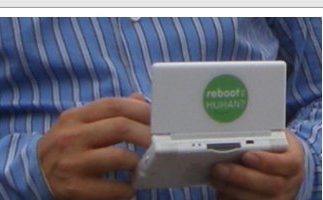Are virtual worlds the future of the classroom? | CNET News.com
In this good article from CNET, the concept of multiuser virtual environments, or MUVE, is discussed.
Below is a quote from the article:
MUVE is a genre of software games created to inspire children to learn about math and science, among other subjects. Unlike most game software and social networks, which elicit negative associations for some parents and teachers, MUVEs are structured environments with rules for behavior, yet no pat formula for action. Designed to provide problems to solve that don’t involve slaying monsters, MUVEs compel kids to figure out the issues to succeed in the environments or have time to socialize.
I’m really interested in this. In Denmark there’s a serious gap here. To the best of my knowledge nothing even closely similar to the Whyville virtual world, that is being discussed, exists.
Educational games should include some kind of social experience, and the possibility for the children to work together towards a common goal.
Projects like Whyville, that provides content from a number of private and public institutions looks like a good place to look for inspiration.
The Danish perspective
All this made me think of the situation in Denmark.
In Denmark the computer use is quite widespread, even in the classroom, but they’re mostly used to teach children skills like Microsoft Office. And if you observe that the children do when they’re sitting in front of a computer, well they’re mostly engaged in playing mindless games, using a MySpace like service called Arto or MSN Messenger.
To put this into perspective, this weeks edition of Harddisken, a Danish radio show that is also available online, visited a Danish school, Skovvangsskolen in the Copenhagen suburb of Allerød.
Skovvangsskolen is very proud of their integration of IT into the classroom, and the fact the school is participating in the so called “Pupils ICT License”, link to a PDF document in English. The school has also developed a lean version of the ICT License (ITC License pixi version – a pun on the cartoons for kids called pixi books).
So what’s wrong with that? Well nothing really, and the school is quite open about their programme. But when I look into the details I’m not too impressed. For one, the web-site is basically empty, nice navigational links but there’s no related content. The goals of the ICT License looks nice, especially the part about information searching and the evaluation of sources are really important.
But if you listen to the tasks that the children are focusing on, it’s things like downloading nice fonts for their PowerPoint presentations, and they were also quite proud that they knew about advanced features of Microsoft Word. And the teachers were saying that learning skills like the detailed workings of the Microsoft Office tools is very important for the children to learn. This really doesn’t fit too well with the intention to teach the children to pick the right tool for the right job, if you only introduce them to a few specific products, instead of teaching general skills.
The quality of the educational games that do exist, in Denmark at least, is, to the best of my knowledge, also generally quite low, focusing on very basic skills.
I think that we need a Danish Whyville.


